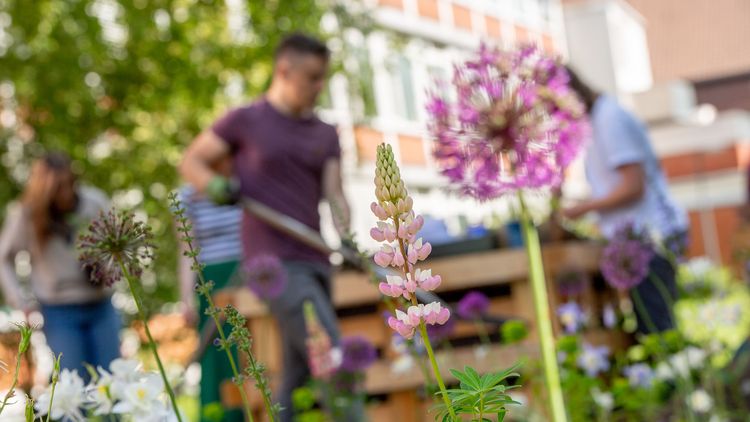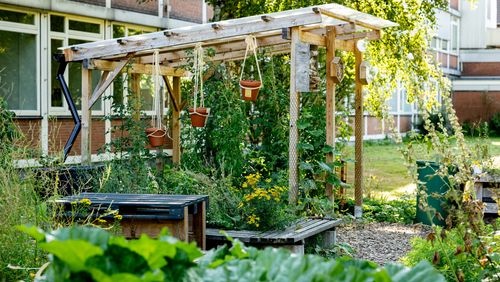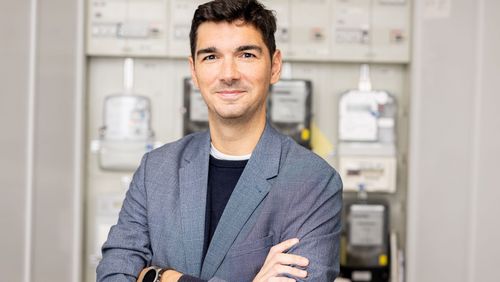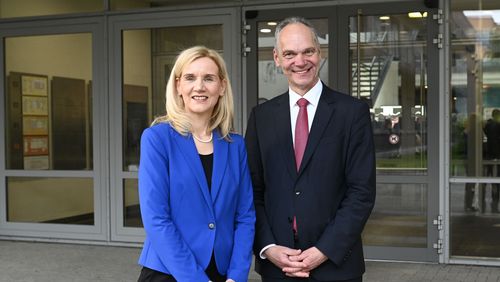The university is a founding member of the "Nature Positive Universities" alliance – recently presented at the UN Biodiversity Conference in Montreal. The target is to create new habitats and to stop the decline of biodiversity on campus.
In spring, the insect friendly landscape in front of one of the buildings on Wechloy campus is particularly striking. This is when numerous purple crocuses bloom under a large bee hotel. Some time later, oregano, evening primrose, lilies and lavender thrive in a perennial bed bordered by a stone wall. A total of five of these colorful refuges exist on the Wechloy campus, the Haarentor campus and in the university's botanical garden. They are a result of the "BeeScapes" project, funded by the the European Regional Development Fund and designed to create more diverse habitats for insects and counteract the decline of the six-legged creatures.
The project, which was carried out during the pandemic, heralds further changes on campus. The aim is to bring the university's green spaces closer to a more natural state and to create more niches for all kinds of plants and animals. The University of Oldenburg recently reaffirmed this goal with a self-commitment: as one of 111 universities worldwide, it has joined the new alliance "Nature Positive Universities" as a founding member. The launch of the initiative was announced by the UN Environment Programme UNEP and the University of Oxford last Thursday at the UN Biodiversity Conference in Montréal, Canada.
"Biodiversity faces a crisis that is as existential as the climate crisis," says university president Prof. Dr Ralph Bruder. He added that it has become clear that both crises can only be overcome together. "As a university, we want to be a good role model. In the future, we want to do even more for biodiversity and natural ecosystems on campus.” Indirect effects of university operations on biodiversity should also be minimized – for example, by purchasing sustainably grown products.
Commited to conserve nature on campus
In total, more than 400 universities are associated with the network. "Through the self-obligation we commit ourselves to engage more intensively with the issues of biodiversity and nature conservation on campus and also to set ourselves specific goals in the field of ecology," says Anna Krämer, the university's Climate Protection Manager. The universities' initiative is part of the UN Decade on Ecosystem Restoration. In 2021, the United Nations called for halting the ongoing destruction of ecosystems around the world by 2030 and restoring degraded natural areas.
At the University of Oldenburg, quite a bit has been achieved in recent years: Some paths are lined with flowering strips in summer, and nesting boxes are attached to trees and various buildings – for the strictly protected kestrels, for example. Since last year, a campus garden with vegetable plants, herbs and perennials has been established by students in the courtyard between buildings A10 and A7.
Additional actions are outlined in the university's soon to be published integrated climate protection concept, which was prepared by a group led by Anna Krämer. "We took a holistic view on the issues of climate protection, sustainability and ecology right from the start," Krämer reports. The concept includes green roofs or facades on new buildings. In addition, the vegetation on the university's grounds is being mapped in detail. "We have already compiled a list of the plants growing on the Haarentor campus and recorded how the green spaces are used. The same will soon be done in Wechloy," says the climate protection manager. Based on this data, it will be determined which areas can be transformed to a more natural state.
The participation process for the climate protection concept has already shown that many employees care about a nature-friendly campus. "We received many e-mails on this subject," reports Krämer. Moreover, the university can draw on motivated students and excellent expertise on biodiversity and sustainability in various institutes and in the botanical garden.




